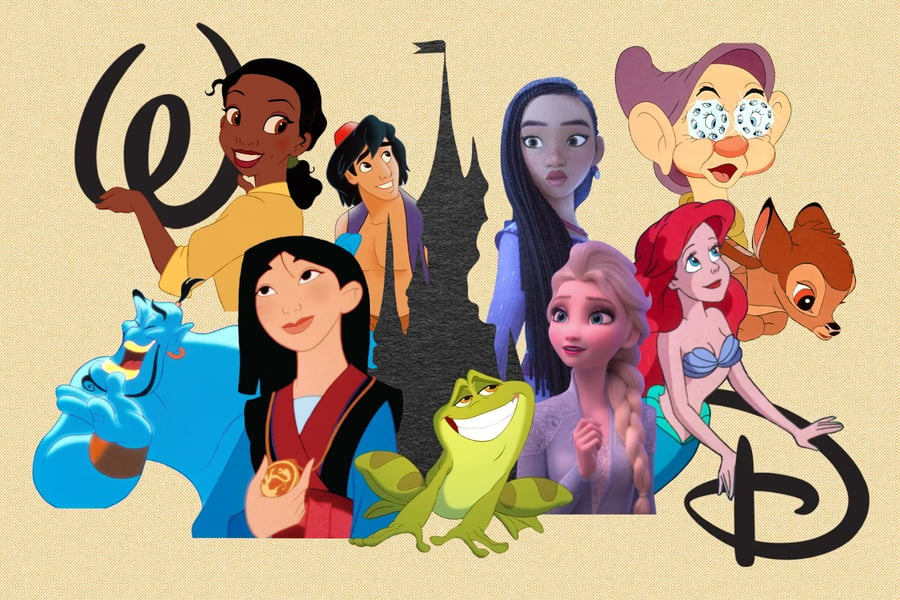Every Walt Disney Animated Movie, Ranked
From 1937’s ‘Snow White and the Seven Dwarfs’ to 2023’s ‘Wish’, we’ve ranked all 62 films from the dream factory

PHOTO ILLUSTRATION BY MARIA-JULIANA ROJAS. IMAGES IN ILLUSTRATION BY WALT DISNEY/ EVERETT COLLECTION, 6; BUENA VISTA PICTURES/EVERETT COLLECTION, 2; EVERETT COLLECTION, 1; ADOBE STOCK, 2.
IS THERE A more recognizable brand on earth than Disney? The studio has, of course, gone far beyond the modest dreams of Walt and Roy Disney, who began the company 100 years ago sketching away in a garage. They could never have predicted their humble beginnings turning into an enormous corporation with thousands of films, shows, games, and more under its belt.
Though the company has seemingly infinite facets, Disney is still known for one thing more than any other, and that’s animation. Walt Disney Animation Studios has led the way in animation since its inception, from its Silly Symphony shorts to the first feature-length animated film, Snow White and the Seven Dwarfs, in 1937, and beyond. Wish, out Nov. 22 and centered on a 17-year-old girl (Ariana DeBose) who wishes upon a star to help save her kingdom of Rosas from an evil king (Chris Pine), marks Disney’s 62nd animated classic.
But which of Disney’s 62 animated movies reigns supreme? Which films capture that Disney magic effortlessly, and which ones make you wish they were never part of our world? Be our guest and dive into our ranking of every single Walt Disney Animation classic.
From Rolling Stone US














































